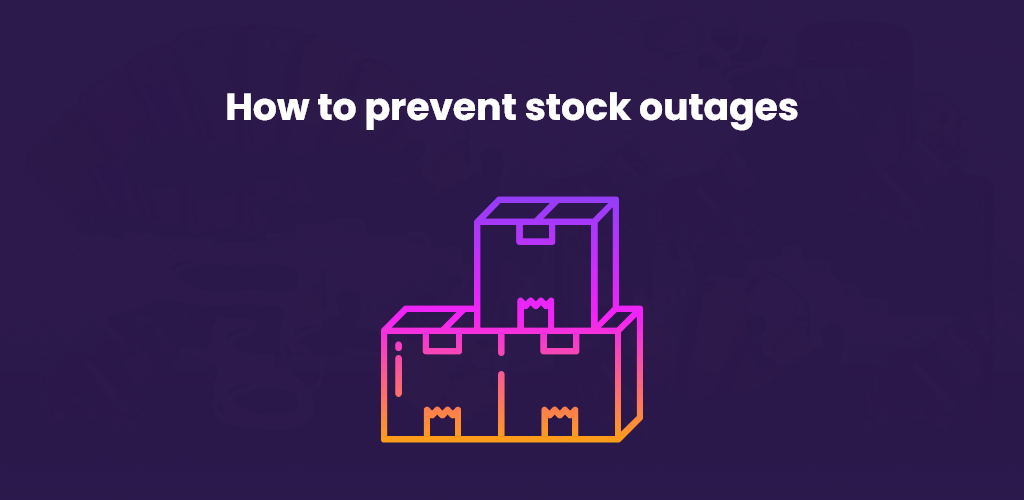How to prevent stock outages
The problems with the global supply chain have been well documented by the mainstream media, and it seems like there are new stories about it each day. With no sign of the situation easing at the moment, and customer demand for eCommerce sales increasing despite knowing about the issues, it is a stressful time for retailers, even if you’ve managed to be successful in quarter four. Having stock available is essential for all retail businesses, whatever time of the year.
But currently, many retailers can’t guarantee stock availability. Throughout quarter four of 2021, that has been a huge problem, given that most experts are predicting eCommerce sales to smash the records set in previous years. Even businesses that aren’t selling gift products, and that sell to repeat customers on a regular basis are struggling, because their regular shipments aren’t arriving as they would normally expect. And we don’t need to explain just how big of a problem it is when loyal customers choose to go elsewhere – they are hard to win back, especially if your competitor has a reliable source of stock.
What has caused the problems with the supply chain?
The global supply chain has been under pressure for quite some time – and eCommerce has definitely had a part to play in it. The always on, ‘want it now’ approach to shopping that Amazon has perpetuated means that products need to arrive faster than they ever did before eCommerce began. But the supply chain hasn’t caught up, and products are still shipped in the traditional way, it was likely to only be a matter of time before the strain began to show.
We all saw just how fragile the global supply chain is in March 2021, when the Ever Given became stuck in the Suez Canal, but there have been so many other issues that have fed into this problem. Before and since, issues that have fed into the problems with the international supply chain include:
- The coronavirus pandemic causing issues for manufacturers, shipping companies, and retailers worldwide
- Delays in manufacturing due to the availability of materials – and COVID outbreaks causing delays in manufacturing products
- Shipping containers being emptied and not returned – creating further problems for sending new products
- Ships are full – meaning there is little space to add extra stock
- Congestion, strikes and COVID outbreaks causing delays at ports around the world
- Increases in the cost of shipping due to lack of space, increased fuel prices and lack of containers
Specifically within the UK, we’re seeing other issues too. The ongoing effects of Brexit, including changes to customs charges are still causing delays at the border, and there’s the shortage of HGV drivers that has caused further issues. A lack of lorry drivers not only causes issues with products getting to the UK, once the products are here, there are delays delivering to distribution centres, then onward to retailers, and for couriers and postal services that are delivering to the end customer.
When will the supply chain be fixed?
There is a lot going on, and a lot that needs to be fixed, and because of that, the issues with the supply chain are unlikely to be resolved in the near future. There are many predictions from industry experts that suggest we’ll be a long way into 2022 before the situation is approaching normal service.
Remember too, that the issues with the supply chain are worldwide – reports from the US are demonstrating similar issues, and the number of ships queueing to get into US ports are at an all-time high too. Moving the backlog of shipping containers to where they need to be, and clearing the stockpiles in countries of manufacture is going to take time.
What are big businesses doing to avoid the supply chain issues?
There are a lot of businesses, both large and small, asking the same question, and there are few businesses that are managing to avoid the problems completely. Planning ahead is of course the logical thing to say first, but with all the delays, even if you plan ahead, you won’t be able to dodge those problems entirely. Those ships, and the containers that are overdue, aren’t being sent as predictably as they once were – and with increased costs, some of those shipments may end up not arriving at all.
Some businesses – IKEA and John Lewis, to name but two – announced that they would lease more ships, in order to ensure that they had the stock that they needed for a successful Christmas period. They’re also buying containers, and moving stock between warehouses in order to make the situation better. Other retailers are creating their own delivery fleets within the UK, in order to help gain control and predictability, both now, and in the long term. But for smaller businesses, that isn’t feasible, or even desirable in many cases.
What can small businesses do to avoid the supply chain issues?
The solutions that household retailers are turning to aren’t the answer for all businesses, and this close to Christmas, without the stock that your customers want, you can’t make those sales that you need. Given the current issues with the supply chain, you can’t bank on deliveries being available when you expect them, so you can’t promise ‘delivery by’ dates and take orders before the products arrive with you either. There are steps that you can take to mitigate the issues though – let’s take a look.
Tighten your inventory control
Knowing how many items you have available is absolutely essential – in fact, this probably doesn’t come as a surprise to you that we’re saying this. Inventory management software, and warehouse management systems are the best way to stay abreast of what you have available, and in many cases today, they are integrated into the same package. We’re often asked which is the best inventory management system, but there are advantages to each – so it pays to do your research carefully before you commit to one.
Ensure you know when stock is low
Today, the features that inventory management systems have built in are extensive, and so whichever one you have chosen for your business, be sure to make the most of all that automation. Set up all the rules, notifications, and integrations for your sales channels that you can, so that you won’t miss anything, and so you can focus on the day to day running of your business, including sourcing more lines that will appeal to your customers.
Secure additional stock and alternatives
This is the obvious thing to do – but with the current supply chain issues, it isn’t anywhere nearly as simple as just getting stock on your shelves. Stock might not be available from your supplier, you may not have enough space in the warehouse, and alternatives might not provide the sort of margins that you want for your business. However, if you have managed to win the buy box, or you’re the top seller in the category, retaining that spot is going to be high on your agenda. In that case, engaging with different suppliers or negotiating to buy stock from other retailers may be well worth your while doing.
Where one of your bestselling products becomes unavailable, being able to offer your customer an alternative of similar price and quality may encourage customers to buy from you – especially for listings on your website.
What to do if you run out of stock
Particularly for products that start trending, it might become inevitable that you’ll run out of stock completely – so here are some of the things you can do if that happens.
Pause your listings
As you already know, taking orders, and then having to cancel them can be a massive problem for retail businesses. Cancelling orders – especially when there has been a longer lead time on the order – causes negative feedback, complaints on social media and elsewhere, and those reviews will almost certainly put other customers off ordering from your business too. Taking orders that you end up having to cancel doesn’t have great consequences in terms of your customer satisfaction. But where you’re selling on marketplaces, repeatedly cancelling orders may result in your account facing sanctions too – which can be catastrophic for your sales on that channel, or might even mean that you can’t sell on that sales channel anymore.
Our top tip is to make use of the automated settings on your inventory management to suspend listings where stock reaches a low number (such as five) to stop you accidentally overselling, and to help prevent the need to cancel orders.
Slow your sales down
If you know that you’re getting close to selling out of a product – or even all of your products completely – then try to slow your sales down. Pausing your PPC, Google Shopping, and marketing campaigns, and upping the price on your listings might be counter-intuitive, since you want to make as many sales as possible, but having some stock available at a higher price might be better than having no stock at all in the longer term.
DropShipping sales from UK suppliers
While many established retailers prefer to buy their stock in bulk in order to maximise the potential profits, the issues with the supply chain means that, for certain lines at least, that isn’t possible – especially where wholesalers and suppliers are struggling to source stock. Retailers can avoid some of the issues with sourcing inventory through the quarter four period by DropShipping from suppliers within the UK that have stock available, and will fulfil orders using the DropShipping model.
While the profit margins on DropShipped products are much smaller, DropShipping has many advantages – particularly right now, while the supply chain issues continue to wreak havoc. Getting started with DropShipping suppliers within the UK is relatively quick and easy through DropShipping marketplaces such as Avasam. We verify our suppliers, meaning you can source thousands of lines that are already available in UK warehouses, and you won’t need to pay for stock upfront – so you can continue to sell without requiring additional resources like cash, staff, or space.
Throughout 2021, the problems with the supply chain have been inescapable – and the magnitude of the issues means that they are set to be a headache for the whole industry for a while yet. But with careful planning, use of technology, and gaining access to additional suppliers who can fulfil orders on your behalf can support your business, and can help to prevent the issues from having a longer-term impact.




DropShip products from verified suppliers to diversify your inventory and scale your eCommerce business